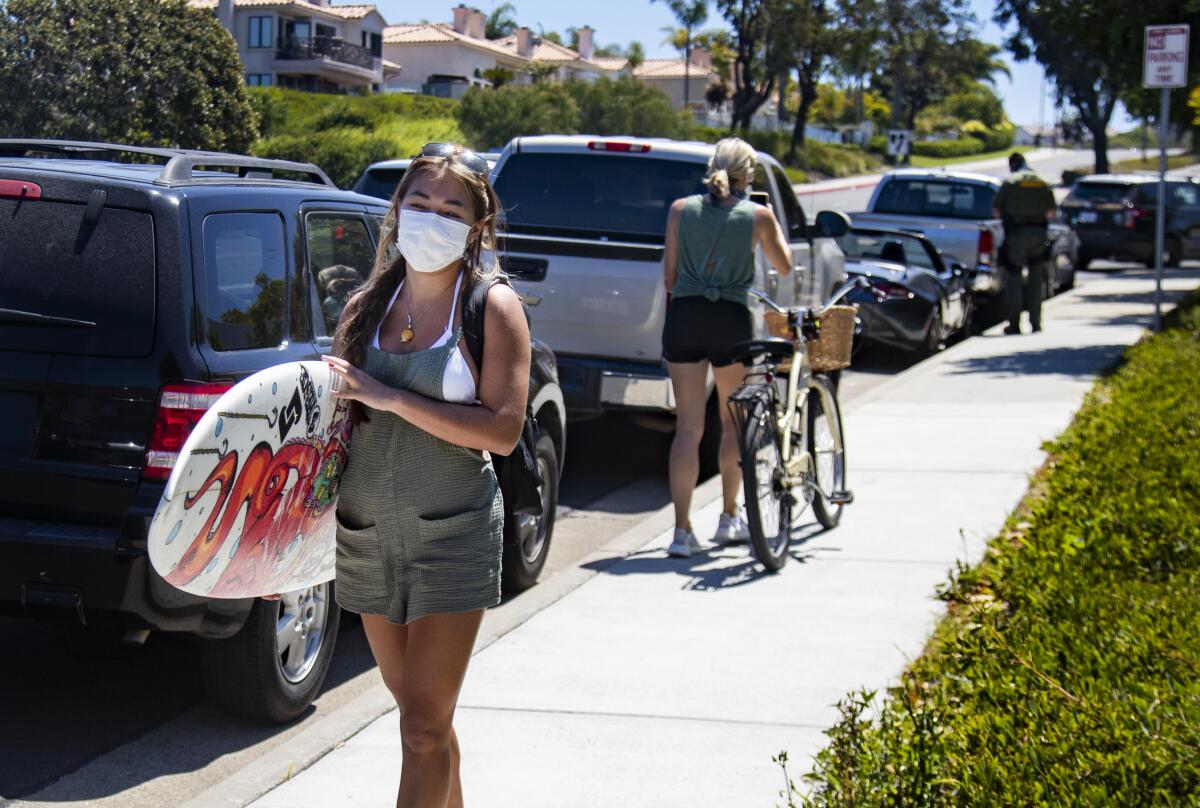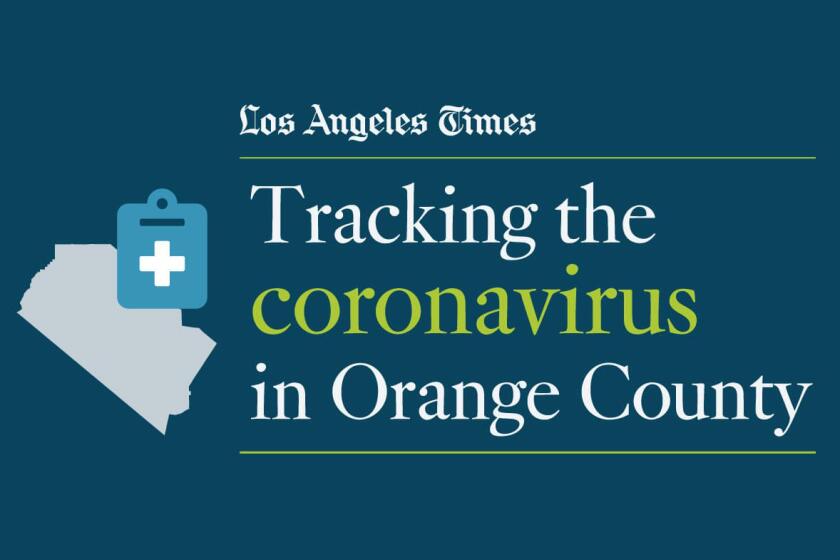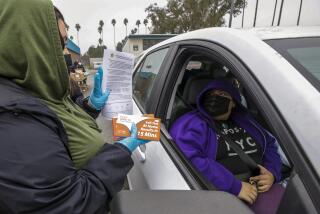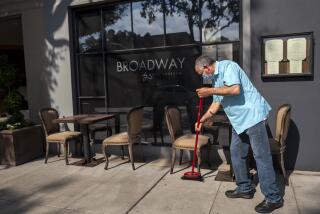Orange County’s coronavirus death toll hits 44 as number of infections climbs past 2,200

- Share via
Two more Orange County residents have died of COVID-19, health officials said Wednesday, as the region’s overall infection count climbed past 2,200.
Half of the county’s 44 total COVID-19 victims were at least 75 years old, and 17 were anywhere between 45 and 74, according to the Orange County Health Care Agency.
The county’s observed mortality rate associated with COVID-19, the disease caused by the novel coronavirus, continues to be just below 2%, significantly lower than the levels seen in neighboring Los Angeles County and statewide.
The news comes after a memo saying California’s governor would go further, closing all state and local beaches and parks, a plan he appeared to abandon.
County health officials also announced an additional 108 coronavirus infections Wednesday, bringing the region’s total to 2,252. This marked the third time in the last five days that Orange County has confirmed at least 100 additional COVID-19 cases.
But the recent increase coincides with a dramatic rise in testing. So far, 29,940 people have been tested for coronavirus infection in Orange County — including 2,203 on Wednesday alone, the second-most in a single day.
Over the last five days, the county has tested 7,857 people.
Of those who have tested positive for the virus, 175 are hospitalized — 70 of them in intensive care, according to the Orange County Health Care Agency.
Despite the recent increases, county officials have expressed optimism that they have effectively flattened the coronavirus curve. Lilly Simmering, deputy Health Care Agency director and interim public health director, told the county Board of Supervisors on Tuesday that the region is trending in a positive direction as its fatality rate is low and the hospital system remains well below capacity.
Some in the business community are lobbying for the county to relax some restrictions put in place to combat the virus’ spread. Perhaps the most significant of those measures is California’s stay-at-home order, which has upended the state’s economy.
While the coronavirus outbreak has all Californians living under statewide orders, some counties have adopted regulations that have end dates.
While the state’s orders take precedence over the county’s, supervisors unanimously approved a set of business guidelines Tuesday that officials said “will act as a model for Orange County to transition back to a normal state of activity.”
“When we talk about the business impact of COVID-19, we’re not just talking about money — we’re talking about people and their ability to provide for themselves and their families,” board Chairwoman Michelle Steel said in a statement. “These guidelines were put together over many long meetings to ensure that all industry representatives, medical professionals and our legal counsel had input in order to best reflect business needs while simultaneously keeping in line with public health recommendations.”
The latest maps and charts on the spread of COVID-19 in Orange County, including cases, deaths, closures and restrictions.
During Gov. Gavin Newsom’s daily news briefing Wednesday, Supervisor Don Wagner — who worked with Steel to craft the guidelines — got on a reporter’s phone and brought up the previous day’s vote.
As part of his response, Newsom noted that “Orange County has the fourth-highest number of people, of all 58 counties, hospitalized in the state of California. I’m concerned about that.”
The county Wednesday reported that 175 people were hospitalized and that 70 of those patients were in intensive care.
“We have a lot of work to do to keep people healthy, keep people safe,” Newsom said. “That’s the data, and the data leads our decision-making.”
More to Read
Sign up for Essential California
The most important California stories and recommendations in your inbox every morning.
You may occasionally receive promotional content from the Los Angeles Times.















